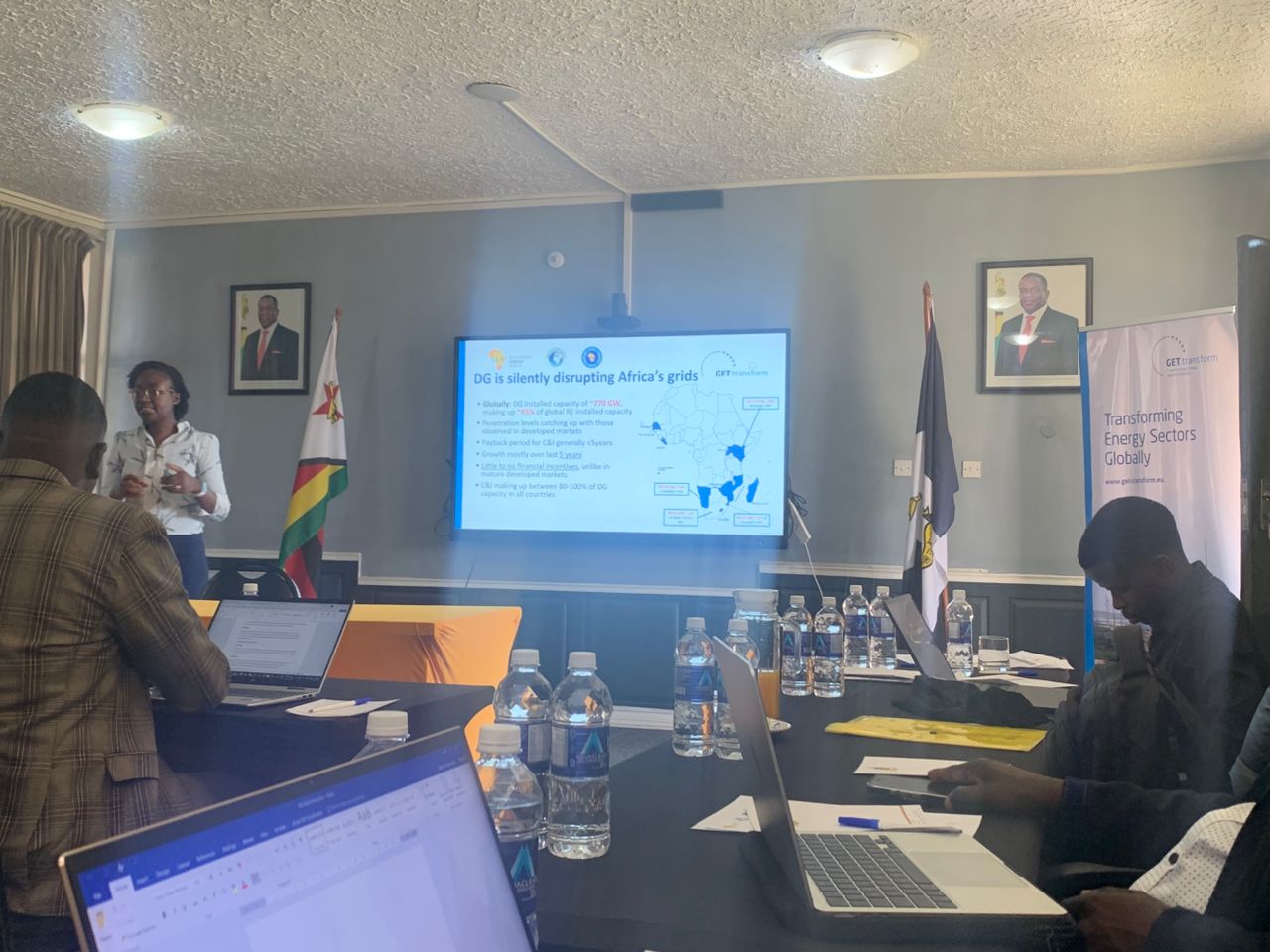In August, Zimbabwean energy sector stakeholders convened for a two-day technical mission focused on Distributed Generation (DG) Interconnection Specifications and Simplified Connection Criteria. Building on initial drafts developed at an earlier workshop held in Pretoria, the results now offer clear and practical guidance to facilitate the smooth integration of embedded generation (EG) into the national grid.
The event brought together 20 representatives from the Zimbabwe Electricity Transmission and Distribution Company (ZETDC) and the Zimbabwe Energy Regulatory Authority (ZERA). It was delivered by technical experts from Digsilent Buyisa and Sustainable Energy Africa (SEA) in the context of GET.transform’s Policy Catalyst Distributed Generation Window in partnership with SEA, the African Forum for Utility Regulators (AFUR) and the Association of Power Utilities of Africa (APUA).
The discussions zoomed in on aligning new interconnection proposals with Zimbabwe’s existing regulatory codes, while also addressing inconsistencies between net metering regulations and the distribution code. Participants reviewed international best practices and explored strategies to ensure the framework reflects Zimbabwe’s energy context while complying with global standards.
The mission also analysed the underlying impacts of EG penetration scenarios on the national generation system, such as its effects on grid, spinning reserves, and power quality. Experts suggested technical modelling approaches for addressing these impacts and in managing the long-term increase of the variable renewable energy (vRE) integration.
As Zimbabwe is currently finalising its net metering regulations and reviewing its distribution codes, stakeholders expressed strong consensus on the importance of continued consultation with relevant committees and decision-makers to ensuring the draft regulations and guidelines are considered during these processes.
By introducing clear technical guidelines and streamlined approval processes, the framework is expected to attract private sector investment, strengthen grid reliability, and accelerate Zimbabwe’s clean energy transition.
The finalised interconnection frameworks are expected to be published later this year, marking significant milestones in Zimbabwe’s efforts toward a sustainable, diversified, energy future.




